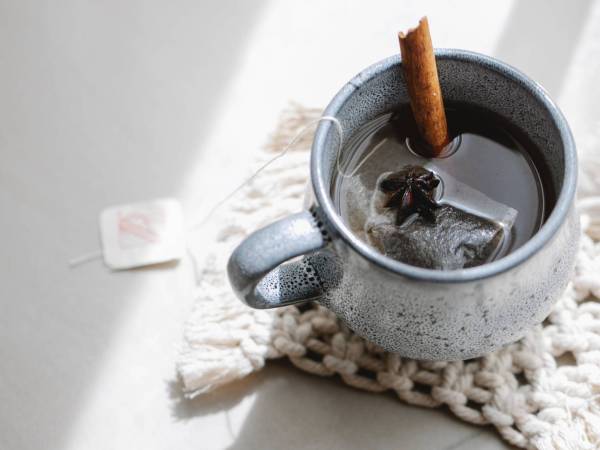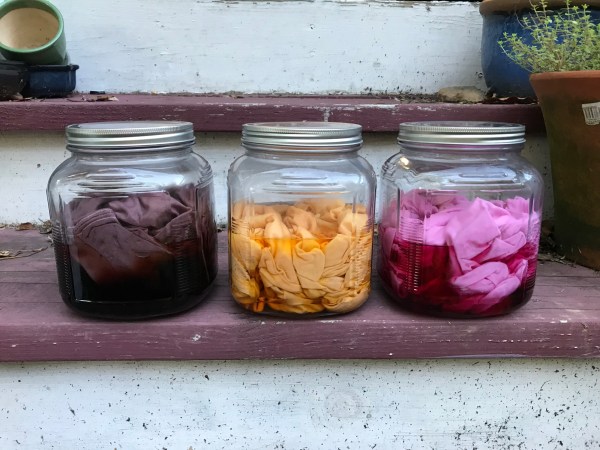

Maybe it was your mom, or maybe it was a TV show, but at some point in your life, someone probably told you that you need to sort your laundry. The basic theory—separating your lights from your darks—is easy, but it’s not enough.
Other sorting methods will help you take better care of your clothes, which will not only keep your favorite garments looking great for longer, but will reduce your need to buy more. And in turn, you’ll save money and shrink your carbon footprint.
You should start by reading the care labels on your clothes carefully, but beyond that, the level of sorting you choose will depend on the time and energy you want to invest.
Level 1: Sort by colors and newness
Even if no one taught you to separate light and dark clothes, chances are you learned it pretty quickly the minute you started to live on your own. It’s the most basic laundry sorting you can do, and for good reason: dark and bright-colored garments are dyed with pigments that can be unstable and may transfer to other textiles.
The risk of color cross-contamination is especially high when you’re using warm or hot water to wash your clothes, or you’re dealing with organic fabrics such as cotton. Most of the time, this transfer is too subtle to be noticeable on items that are already heavily dyed. But if you’ve ever washed a white sock with your colors by accident, you know the combination can be a recipe for disaster.
[Related: How to wash your clothes without wearing them out]
Sorting by colors is easy, but it can get hard quickly when you reach into your hamper and pull out… gasp… a striped shirt. Before your brain explodes, think of democracy: Assess the amount of dark and light in the fabric and determine where the majority wants to go. If you have a sailor shirt with wide white stripes, throw it with your lights, but if navy blue is the predominant hue, it goes with the darks.
If you stumble upon a 50-50 scenario, throw your garment in whichever pile you feel most comfortable with. If you want to be extra careful, use a gentle cycle to prevent a tragedy.
“The delicate wash cycle has less agitation and typically uses cold water,” says Jessica Zinna, senior scientist for Tide. “This means less abrasion to fabrics rubbing against each other and less risk of dye transfer.”
When it comes to dye transfer risk, new clothes are definitely the biggest offender. Fresh-from-the-store garments usually have a lot of dye still in them, which may be due to low-quality dyes. After a shopping spree, it’s always a good idea to put your haul in the washer by itself for one or two cycles to get rid of that extra dye.
If you’re worried a garment might still bleed, do a sink test: Put it in a sink or bucket with lukewarm water, move it around, and leave it for 30 minutes. If you notice any dye in the water, wash the garment separately with other clothes in the same condition or hand-wash it instead.
Level 2: Sort by colors, newness, textures, and weight
If you want to step it up a little, add two new sorting categories: texture and weight.
Texture can refer to how delicate a garment is (because of its construction or the material it’s made of), but also if it has hardware on it, such as buttons, zippers, hooks, or snaps. Weight, on the other hand, can mean the actual weight of the fabric (heavy denim or canvas versus lighter fleece, for example), or its size.
Water makes heavy textiles even heavier, and that weight can damage more delicate garments when they tumble together in the washing machine, explains Zinna. This is why it’s a good idea to separate sheets and towels from the rest of your clothes.
Hardware can also damage more delicate garments by rubbing against them or snagging on them. Ideally, you’d wash your hardware-heavy clothes separately, but zipping zippers and buttoning buttons will work if you can’t do multiple loads, says Zinna. Knits, lace, and anything that has holes in it, like fishnet stockings, for example, are especially susceptible to getting caught on hardware, so be extra careful if you have one of these garments in your hamper.
The intersection of a Venn diagram featuring hardware and weight is mostly populated by one piece of clothing: jeans.
“Jeans are made of denim, which is a cotton-based fabric. Natural fibers like cotton do not hold onto dye as well,” says Zinna. “That’s why you might notice your jeans fading more easily than other garments.”
Also, jeans generally go through a process called garment-dyeing, which means they are dyed after the fabric is cut and sewn. Zinna explains this helps prevent shrinkage and shape loss, but can also lead to additional dye transfer.
To prevent this, wash your jeans inside-out. You should also make sure to zip and button up your denim, which will not only protect other garments in your load but will help your jeans retain their shape. If you want to go the extra mile for your favorite pair, forgo the dryer partially or completely.
“In general, your jeans will last longer if you line-dry them or take them out of the dryer slightly damp. Smooth them into shape and let them dry on a flat surface or a hanger,” Zinna says.
Level 3: Sort by colors, newness, textures, weight, and dirtiness
If you feel like it’s time to give your laundry the attention it has always deserved, add one more category on top of the four we’ve already mentioned: dirtiness.
The most obvious reason for this is that dirt and bad smells transfer to other less-soiled textiles. You shouldn’t wait for laundry day to isolate these garments from the rest of your clothes—throw them in a separate hamper the moment you take them off.
But you probably know the most important reason why you should be sorting out your heavily soiled garments—every wash gradually damages clothes. Factors like what detergent you use, which cycle you choose, and how you sort your laundry help reduce the damage, but even then, the song is still the same: The more you wash your clothes, the shorter their lifespan.
Heavily soiled clothes need heavier cycles to remove all stains, which means these cycles are usually not only longer, but also use more agitation to loosen up deeply embedded dirt, Zinna explains. This can be excessive for, say, unstained shirts you threw in the hamper just because you wore them twice.
Sorting your clothes by dirtiness will prevent your cleaner garments from tumbling around in your washing machine for longer than they need to, resulting in less washing and, therefore, better-looking clothes for longer.
It’s good practice to distribute your laundry into three piles depending on how soiled they are. The first one should include garments with no visible grime, while the second lot should have those with a stain or two. The third should hold the dirtiest clothes you have—think your rugby uniform, your gardening overalls, or that dress you were wearing when your friend decided it was a good idea to scare you while you were holding a birthday cake.
Is laundry sorting sustainable?
You don’t have to be a mathematician to know that more piles of sorted clothes mean more loads and more washing cycles—which in turn means more water, more power, and more money.
Sustainability is something we should always consider in our day-to-day lives, but things may not be as terrible as you imagine if you have a newer, more advanced washing machine.
“The advanced technology in high-efficiency (HE) washing machines on the market today is designed to automatically adjust the water volume used based on load size and fabric absorbency,” explains Zinna.
[Related: Electricity-free washing machines for clean laundry wherever you go]
Traditional washing machines, especially top-loading models, use an average of 20 gallons of water per load. HE technology reduces that to 14, and depending on the model and size of your load, this can go down to 5 gallons. Likewise, your machine dedicates 90 percent of the energy it consumes to warming up water, so using a cold water cycle will result in a much more sustainable laundry load. And if you’re worried the lower temperature won’t be enough to remove stains, Zinna recommends switching to a heavy-duty detergent designed specifically for HE machines—they generate fewer suds, so your washing machine will dispense less water to rinse your clothes.
“Choosing to sort your laundry and wash in cold water can preserve your garments and reduce your energy usage, making your laundry routine more sustainable,” she says.
Because that’s the other thing—the better care you take of your clothes, the longer they’ll last. It takes 1,800 gallons of water to make a single pair of jeans, a number that may be even higher if you consider the dyeing and washing processes. Cotton t-shirts are not far behind—making a new one takes 400 gallons of water.
We definitely don’t buy new shirts, dresses, or pants solely to replace worn-out garments in our wardrobes. But taking good care of the clothes we already have helps eliminate that need altogether. That makes sorting, by definition, a more sustainable choice.















